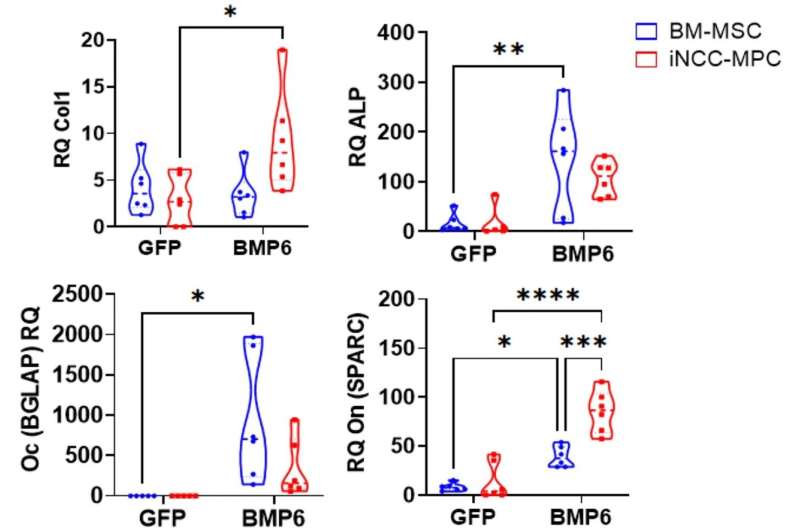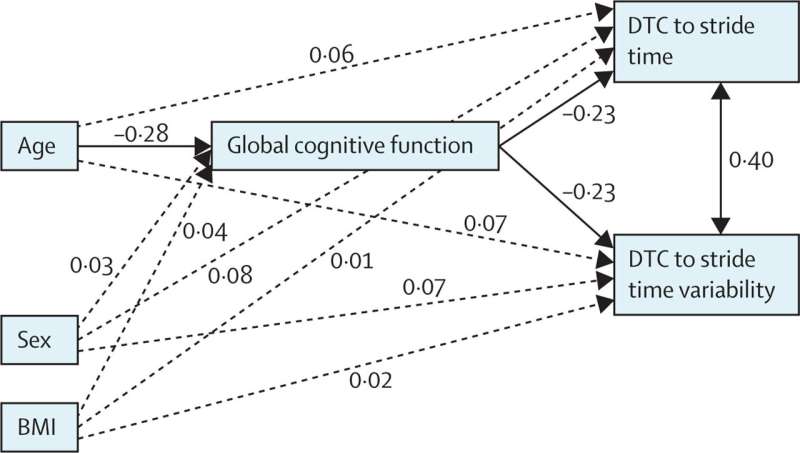
Two new discoveries led by means of Cedars-Sinai investigators display stem mobile remedies can lend a hand boost up and advertise the therapeutic of bone and tendon accidents.
“We are the use of developmental biology and stem mobile era to fix and regenerate broken bones and tendon tissues, which has the possible to dramatically regulate affected person results,” stated Dmitriy Sheyn, Ph.D., assistant professor within the departments of Orthopaedics, Surgical operation and Biomedical Sciences at Cedars-Sinai.
Contents
The use of iMSCs to fix tendon and ligaments
Within the first find out about, printed within the Magazine of Orthopaedic Analysis, Cedars-Sinai scientists confirmed that specialised engineered stem cells known as precipitated pluripotent stem cell-derived mesenchymal stromal cells (iMSCs) can regenerate and service the tendon extra successfully than different sorts of cells.
The discovering is a step ahead in creating an effective cell-therapy way for repairing injured tendons and ligaments, which is an important fear in sports activities medication. Tendon accidents are steadily related to top morbidity, extended disabilities and painful rehabilitation classes, all the way through which secondary tendon ruptures can steadily happen.
“Some of the major benefits of the use of pluripotent stem cells is they probably constitute a vast supply of tenocytes, the cells in tendons and ligaments,” stated Sheyn, who could also be an investigator within the Cedars-Sinai Board of Governors Regenerative Medication Institute. “Those cells may just additionally at some point be offering an off-the-shelf allogeneic supply for tendon cell-therapy packages.”
The tendon—which is a cushy tissue that connects muscular tissues to bones or, in case of ligaments, bones to bones—has very low capability to heal, and tendon tears or ruptures could cause excessive ache. Even after the tendon heals, it by no means is going again to the similar serve as as sooner than the harm and has top charges of re-rupture.
To have the option to higher restore those accidents, investigators appeared to iMSCs.
Sheyn, who’s the senior and corresponding creator of the find out about; Angela Papalamprou, Ph.D., who’s a postdoc within the Sheyn Laboratory and primary creator of the find out about; and the find out about workforce engineered the cells to provide a transcription issue known as scleraxis, which is necessary in tendon building.
They discovered iMSCs have been ready to effectively building up the volume of scleraxis that was once produced, which helped the iMSCs shape tendon-like tissue and change into extra like tendon cells.
Then they uncovered the cells to one of those mechanical pressure known as cyclic loading, which is a procedure that is helping information the iMSCs to become tenocytes.
“Whilst additional research are had to resolve the whole attainable of those changed iMSCs for tendon restore, the consequences confirmed that the iMSCs can successfully develop into tendon cells and display promise as a possible mobile remedy for tendon restore,” stated Sheyn.
Repairing the cranium with cranial-specific stem cells and 3-D Printing
In the second one find out about, printed in Clinical Stories, scientists discovered the use of iPSC-derived cranial-specific stem cells and embedding them in a distinct 3-D-printable subject material can lend a hand heal injured bones within the cranium.
Investigators discovered the fabric, known as bio-ink, helped the cells continue to exist and shape new bone cells extra successfully than different sorts of cells, like iMSCs. When examined in mice, the mix of the use of the bio-ink with the cranial-specific stem cells helped restore the cranium higher than different sorts of cells that have been examined.
“Treating cranial bone accidents is a big scientific problem,” stated Sheyn, the senior and corresponding creator of the find out about. “New regenerative approaches like this one have the possible to be a formidable new choice that can lend a hand cope with craniofacial reconstruction wishes.”
These days, when somebody has a worrying cranium bone harm, they most often want a graft the use of bones or artificial subject material to fix the wound. Whilst the use of an individual’s personal bone is most often the most suitable option, donor-site morbidity is a proscribing issue, and the use of artificial fabrics like titanium or polymers is steadily related to top charges of infections and headaches, particularly for youngsters.
Investigators have discovered 3-D bioprinting to be a possible resolution. It is a creating era that may create scaffolds from other biomaterials that may mimic the form, measurement and dimensions of the harm.
Alternatively, investigators have discovered the use of the 3-D bioprinted fabrics on my own isn’t sufficient.
“Whilst 3-D printing can provide us the form that we wish, the issue that we’ve got within the 3-D printing box is that we can’t print with cells for the reason that printing era isn’t mobile suitable,” stated Sheyn. “And it is the cells that can actually lend a hand with therapeutic and repairing of the harm.”
To look if they are able to fortify the brand new era, Sheyn; Giselle Kaneda, a analysis assistant within the Sheyn Laboratory and find out about creator; and different contributors of Sheyn’s laboratory examined two bio-inks to look which one supplied higher viability and higher use for cells to distinguish and regrow new cells within the cranium that might probably restore the defect.
They in particular checked out various kinds of iPSC-derived cells and added a distinct protein known as BMP6 to look if it will lend a hand generate viable bone graft choices for cranial reconstruction.
They discovered the mix of the cranial-specific stem cells with BMP6 and the bio-ink stimulated harm therapeutic within the bone extra successfully than once they used iMSCs.
“Those effects spotlight the printability of bio-ink scaffolds and their talent to strengthen stem mobile survival and differentiation, making them horny for craniofacial reconstruction,” stated Sheyn.
Additional info:
Angela Papalamprou et al, Directing iPSC differentiation into iTenocytes the use of mixed scleraxis overexpression and cyclic loading, Magazine of Orthopaedic Analysis (2022). DOI: 10.1002/jor.25459
Juliane D. Glaeser et al, iPSC-neural crest derived cells embedded in 3-D printable bio-ink advertise cranial bone defect restore, Clinical Stories (2022). DOI: 10.1038/s41598-022-22502-8
Quotation:
Mining mobile remedy to fix injured bones and tendons (2023, February 27)
retrieved 14 March 2023
from https://medicalxpress.com/information/2023-02-cell-therapy-bones-tendons.html
This file is matter to copyright. Except for any truthful dealing for the aim of personal find out about or analysis, no
section is also reproduced with out the written permission. The content material is equipped for info functions handiest.
Supply Through https://medicalxpress.com/information/2023-02-cell-therapy-bones-tendons.html



